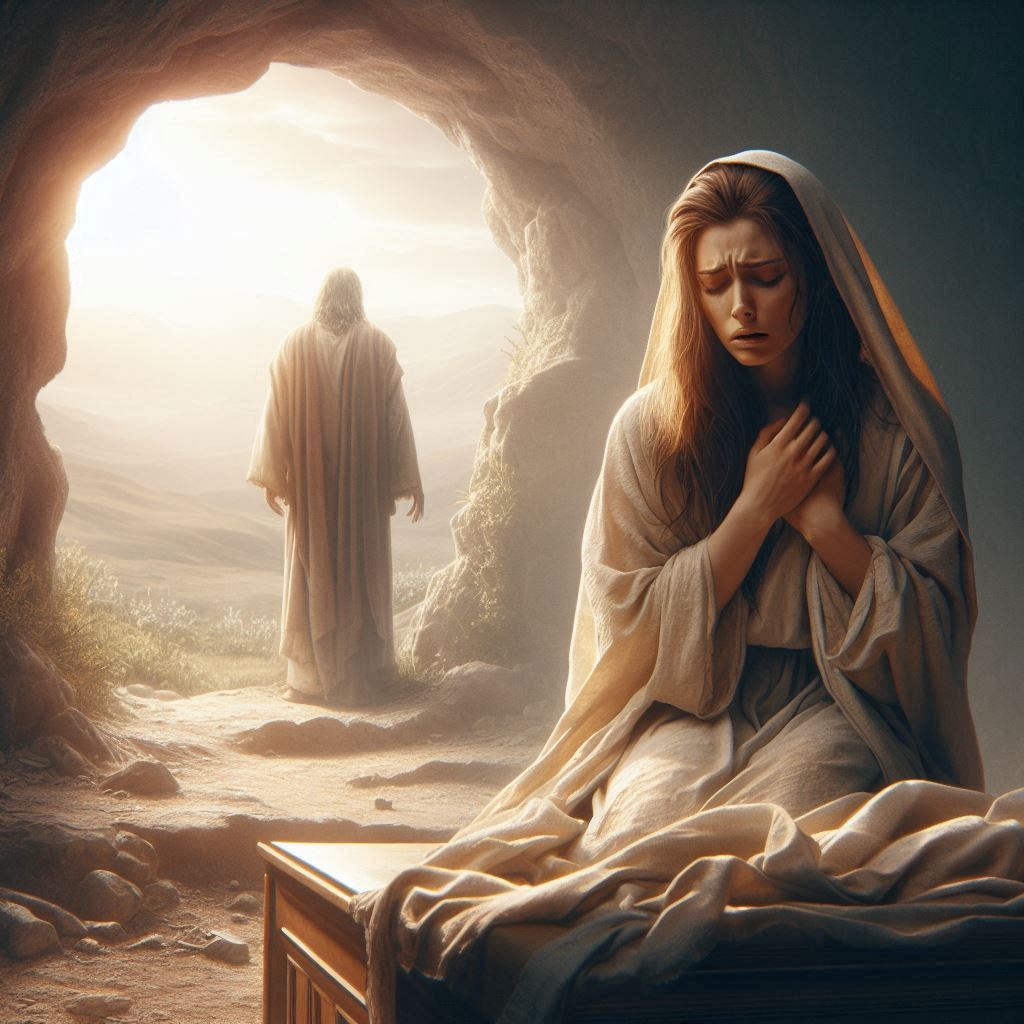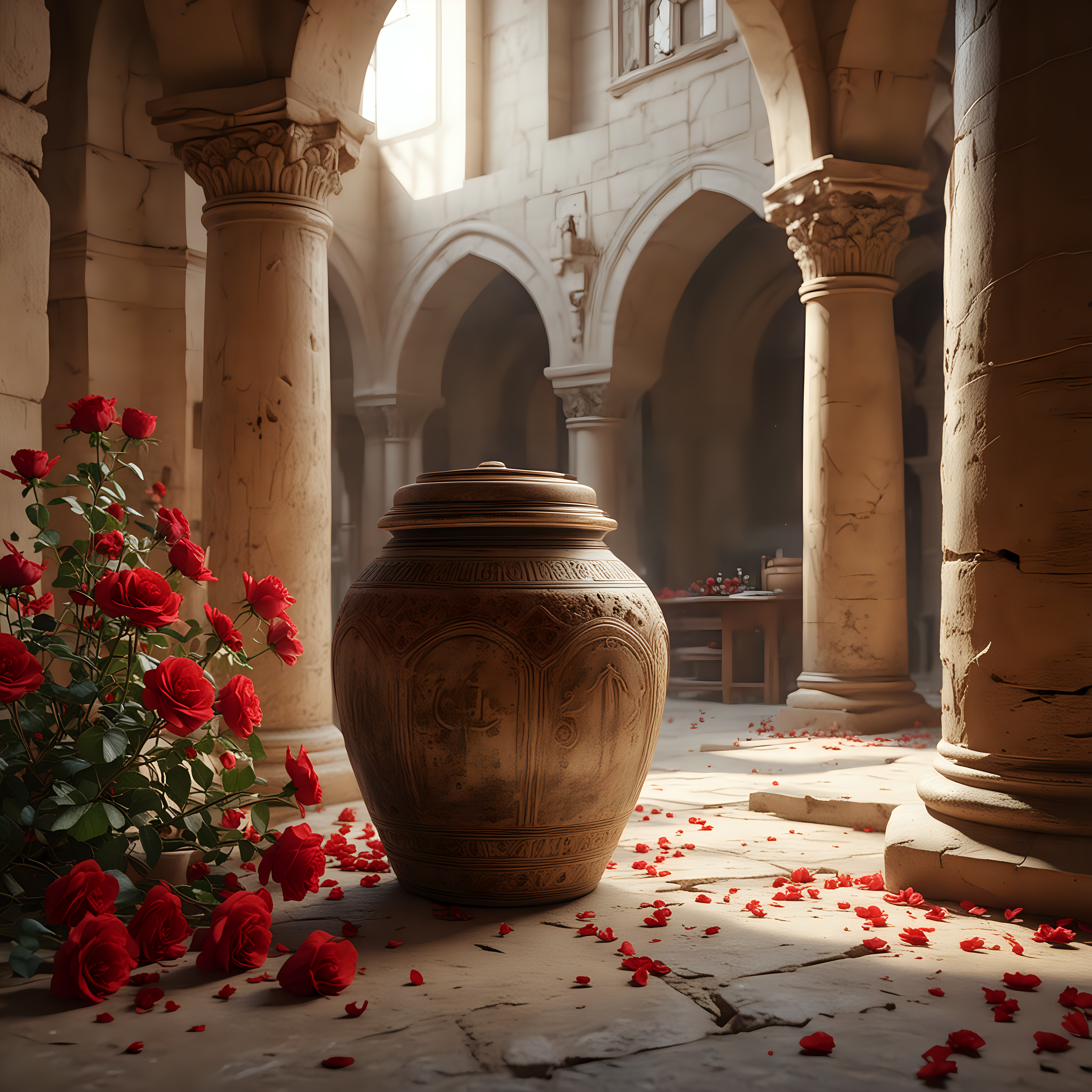Welcome to part 2 of this two-part episode about the mysteries of St. Mary Magdalene. In our previous episode, we looked at all the misconceptions surrounding Mary as a Biblical figure, and in this episode we will dive even deeper into her story and her significance as a key figure in early Christianity. We’ll also explore what she represents on a spiritual level.
From this post, you’ll learn more about:
- Why St. Mary Magdalene is associated with the symbol of the skull
- Why Mary’s own skull is so special
- The full significance of Mary’s presence at both Jesus’ crucifixion site and his resurrection
- An exciting pilgrimage opportunity for you to connect with St. Mary Magdalene on a deeper level
The Significance Of The Mary Magdalene Skull
In 1295, Charles the Second had a vision of St. Mary Magdalene. She told him to dig in the town square of a quiet French village called Saint-Maximin. Charles did this, and they found a skeleton believed to be Mary’s bones. Shockingly, the skull still had a single piece of skin attached to the forehead where Jesus touched Mary’s head.

The mysterious, even miraculous circumstances of this discovery—the visionary experience, the preserved skin—make it something worth marveling at. It is all the more incredible, though, when you consider that St. Mary Magdalene had already been closely associated with the symbol of the skull. This is evident in many examples of medieval art. She is often depicted in a cave or in a quiet room, gazing at a skull.
The skull is a significant symbol for Mary for several reasons. Perhaps the most straightforward is that it links her to the site of Jesus’ crucifixion:
“[Jesus] went out, bearing His own cross, to the place called the Place of a Skull, which is called in Hebrew, Golgotha.”
John 19:17
Mary Magdalene Skull: A Link Between Life And Death
As mentioned at the end of my last post, Mary of Magdala was one of the very few (if not, only) witnesses at both Jesus’ crucifixion and his resurrection. For that reason, Mary represents the link between life and death, of which the skull is often used as a symbol. Shakespeare’s character Hamlet holds and gazes at the skull of one his friends as he delivers his famous “to be or not to be” monologue. Interestingly, there is a very similar scene in the Daoist Book of Chuang Tzu:
“Lieh Tzu was following the Tao and one day he was eating by the roadside and saw a one-hundred-year-old skull, which he pulled clear of the weeds and addressed, saying, ‘Just you and I know that you never died nor were you ever born. Does this distress you? Do I really enjoy myself? Where does everything come from? […] Sheep’s Groom comes together in intercourse with bamboo that has not put forth any shoots for years and they give birth to Green Peace plants. These give birth to leopards, leopards give birth to horses, horses give birth to humans, humans eventually sink back to what was in the beginning. All the multitudes of life arise from the mystery of beginning and return there.”
The Book of Chuang Tzu
Just like Lieh Tzu, Mary of Magdala realizes that death is not just the end, but also the beginning because she witnessed Jesus die and return to life. And today, much like Hamlet and Lieh Tzu and Mary herself, you can contemplate the link between life and death while gazing at Mary’s skull, which remains on display in France (more on this later!).
Jesus’ Crucifixion Site
St. Mary Magdalene did not need to bear witness to Jesus’ crucifixion and eventual death. Her decision to hang around at Jesus’ crucifixion site was entirely her own and was no small feat of courage.
On the one hand, she was fighting through her own painful emotions. Can you imagine how hard it would be to stand at the foot of a cross and watch someone you love die? How do you do that and not give up on life? How do you go through something like that without being completely crushed by grief? Still, Mary kept vigil until his last breath, until Jesus’s body was taken down from the cross. Rather than allowing herself to be consumed by her own despair, she was focused on what little comfort she could provide. She had such a close connection with Jesus that she wanted to be with him until the end.
It was even more courageous for Mary to stay at Jesus’ crucifixion site when you consider the physical danger she put herself in by doing so. In the ancient world, crucifixion under Roman rule was common. The road from Jerusalem to Rome was lined with crosses. Any rebel could be strung up and left for the birds to eat. Women and children were just as likely to be crucified as men. So, it’s not like Mary was safe to stay at the foot of the cross. And yet, she was able and willing to stay present when almost everyone else fled—everyone except Jesus’s mother and the young John.
A St. Mary Magdalene Prayer
Who has stood by you in your darkest hour? How can you offer the gift of being a witness to another, in the midst of their suffering?
One way would be to offer a prayer up to St. Mary Magdalene, such as this one:
“Mary Magdalene, open my heart to the gift of my tears. Help me pay attention to where I am called by love’s deepest longings. Help me to see the path that is already laid before me: each step made by the promptings of my heart and the whisperings of Spirit”.
Tears are holy. Where your tears are, your heart is. And where your heart is, God dwells. The Gospel of Thomas says, “If you bring forth what is inside you, what is inside you will save you.” And I would add that if you don’t bring forth what is inside of you, what is inside you will destroy you.
Jesus’ Empty Tomb
Just days after Jesus’ crucifixion, Mary’s emotional wounds were ripped right open again. As she makes her way to Jesus’ tomb to anoint his body with oil, a final act of love and respect, she is overcome with panic when she sees that the stone sealing the tomb had been rolled away.
Did someone desecrate the tomb and take his body? Her worst fears seem to be confirmed when she takes a closer look, finding the tomb to be empty. It took tremendous courage to remain at Jesus’ crucifixion site just days before. Now she is doubly wounded, finding that an additional act of cruelty had been inflicted upon her already deceased companion.
She can no longer bear the sight and turns to flee, tears in her eyes. Flustered and disoriented, she nearly collides with the gardener, who asks, “Lady, why are you crying? Who are you looking for?” Wondering if the culprit had just brazenly revealed himself, she responds, “If you have taken him away, tell me where he is, and I will take him.”
Then the gardener speaks her name, “Mary.”
Jesus’ Resurrection
The sound of his voice has a familiar warmth that halts her breath. It’s Him—alive, standing right here. The recognition was immediate, disbelief giving way to a profound, all-encompassing joy. “Rabboni!” Mary reaches out to Jesus in a flood of relief and happiness.

But he stops her, “Do not cling to me; you see, I have not yet ascended to my Father. Go to others and tell them that I am ascending to my Father and your Father, to my God and your God.'”
It’s a lovely story with a cathartic punch line, but let’s not lose sight of the full significance of this scene. It is Mary Magdalene to whom Jesus entrusts this final sacred request. He could have chosen to reveal himself to anyone else, but he chose Mary, the apostle who was loyal and devoted enough to stand by at Jesus’ crucifixion site and revisit his body at his burial site.
Furthermore, whether you believe the resurrection actually happened or is simply a metaphor, or whatever, the fact is that there simply is no Christianity without Mary’s testimony of witnessing the resurrection. That makes this story one of the most significant moments in the history of Western civilization.
One More Resurrection Tale: The Mary Magdalene Skull
Medieval writings tell us that, after Jesus’ resurrection, Mary sailed across the Mediterranean to live out her final years in the south of France. Judea would have been dangerous for Jesus’s friends after his death. For that reason, Mary spent her last years on the sacred mountain of Sainte Baume, home of the stained glass we spoke of earlier. Mary Magdalene passed peacefully and was buried in the area, with a beautiful basilica built to house her remains.
Remember the Mary Magdalene skull? Well, more than 700 years after its discovery, forensic researchers analyzed it in 2016. They recreated a 3-D computer-generated model of the skull’s characteristics, including cheek bones and bone structure. They concluded that the skull belonged to a first-century woman who died around age 50.
And—here’s the kicker—her features are consistent with someone from the other side of the Mediterranean. In other words, a first-century woman who may have sailed across the Mediterranean from Judea to the South of France, where the skull was discovered. Though it may seem unbelievable, there is a solid amount of historical and forensic evidence which seems to confirm that this skull did belong to St. Mary Magdalene! Pretty amazing!
The St. Mary Magdalene Pilgrimage
I have amazing news! Registration for The Mary Magdalene pilgrimage in France is now open! Go to dancingspirittours.com/france to learn more. Walk in the footsteps of Mary Magdalene herself, visit her sacred grottos, and gain exclusive access to Chartres Cathedral. And witness the Mary Magdalene skull for yourself! If you feel called to join me on this absolutely life-changing pilgrimage in France next year, don’t wait! We book up very fast. Go to dancingspirittours.com/france
Frequently Asked Questions
No, the idea that Mary Magdalene was a prostitute is rooted in a centuries-old misinterpretation of a Bible verse that was first popularized by Pope Gregory the Great in the 6th century during the Justinianic Plague. The passage in question, Luke 7:36-50, tells the story of a woman who anoints Jesus’ feet with expensive ointment and wipes them with her hair. While it is true that this woman is referred to as a “sinner” in some Bible translations, there is no evidence that she was a prostitute. In fact, there are several other women named Mary mentioned in the Bible, including Mary Magdalene’s close friend Mary of Bethany and Jesus’ mother Mary. This has led to confusion and conflation of these different women throughout history.
In 1295, a remarkable discovery shook the quiet French village of Saint-Maximin—the unearthed body believed to be Mary Magdalene, revealed through a vision to Charles the Second, guiding him to where it lay buried. Today, her tomb resides in the town’s cathedral. Join the Mary Magdalene in France pilgrimage to witness the legendary Mary Magdalene skull.
The Mary Magdalene skull was discovered with a small patch of skin at the exact spot on her forehead where Jesus touched her. It was found in the French Village of Saint-Maximin. Today, the Mary Magdalene skull remains on display in the crypt of the Basilica of Saint-Maximin-la-Sainte-Baume, above her tomb.
Paragraph
Paragraph


